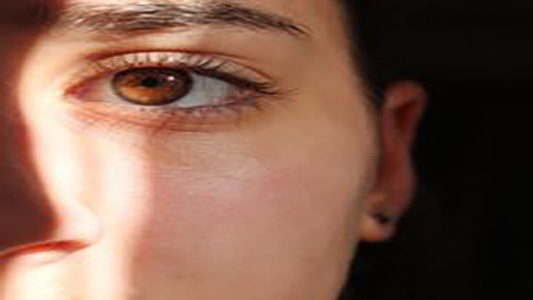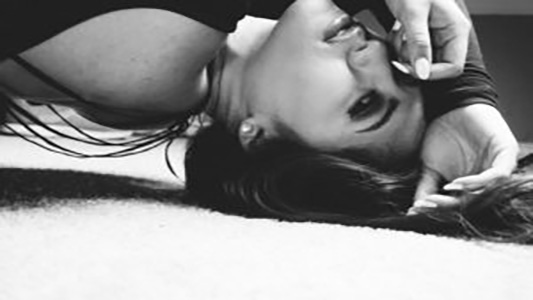When I look back on my relationship history – which includes a few healthy long-term relationships as well as a seven-year marriage that ended in divorce, I see one rather unsettling common denominator underneath them: I eventually got “bored” with the sex.
Now by “bored”, I mean I experienced a dramatic drop in sexual desire. Whether it happened gradually or in a nosedive, my “oomph” always petered into “blah.” And this shift in my desire levels really confused me; for most of these relationships were solid and loving outside the bedroom. As a woman, weren’t these supposed to be the ideal conditions for my desire levels to flourish?
I turned to books for answers. I learned about potential causal factors, like stress, pregnancy and other hormonal changes. I also tried numerous expert-recommended techniques, from positive affirmations and romantic dates and trips, to toys, erotica, lingerie, heck, even wine!
But any positive results I experienced were mild; temporary at best. At the back of my mind, I worried: “Is there something inherently wrong with me?”
A low libido is not the issue
Last week, I happened to catch the tail-end of a CBC interview with Daniel Bergner, author of the book, “What Do Women Want?” He was talking about new scientific studies into women’s desire that show that, contrary to what we’ve been taught, at the core, women have high libidos, perhaps even greater than men. Cultural and evolutionary factors, however, have trained (repressed) women to believe the opposite.
To my amusement, he then started talking about our “cousins”, Rhesus monkeys – how the females are the sexual aggressors, and the males have to “cycled out” when they’re kept in compounds because the females get sexually bored with them.
I raced out and got the book.
For hours, I immersed myself immersed in study after fascinating study on women’s desire, each one supporting what Bergner had said on air: that women’s sexual “nature” is the opposite of how we’ve been “nurtured”.
One study that highlighted the depth of women’s social programming was conducted by Meredith Chivers, a Queen’s University psychology professor. Her female participants were given 90-second erotic audiotapes to listen to, some which involved a handsome male friend, others involving a handsome stranger. As they listened, their genital blood flow with measured with a plethysmograph — a small probe that sits inside the vagina — while women also ranked their desire levels on a keyboard.
The results? Women ‘said’ they were more aroused by the friend; that the strangers roused them minimally.
Their bodies, however, said the opposite: vaginal blood flow flat lined for the friend, whereas eight times the normal blood flow was stirred by the strangers.
The issue faces off with monogamy
In his book, Bergner argues that because women’s libidos are as high, if not higher than men’s, this undoes a major assumption that has been upheld to this day by society: that women are better suited, if not designed, for monogamy. And this is a very threatening idea, not just to men, but to our society as a whole; for we – or at least men — like the idea that half of our society serves as the “moral glue”, while the other half wrestles against “spreading his seed.”
Marta Meana, a psychology professor at the University of Nevada who has studied women and female desire for 25 years, agrees that monogamy creates a sort of “push-pull” on women sexuality. She sees women’s sexuality as being divided into two systems: on the one hand, there is the push or drive of sheer lust, and on the other the impetus of value.
Meana says most women set a high value on the closeness and longevity of relationships. And this has happened for evolutionary and cultural reasons. “But it’s wrong to think that because relationships are what women choose, they’re the primary source of women’s (sexual) desire.”
What DOES get our juices flowing?
So what does drive women’s sexual desire? .
According to Meana, it’s narcissism. She says women’s desire “is dominated by the yearnings of ‘self-love’ – by the wish to be the object of intense, erotic admiration and sexual need.” She then uses a symbolic scene to speak to women’s lust: a woman pinned against a wall, being ravished by a man whose hunger for her is beyond his control. (Note: this isn’t an abuse scene: she wants this particular man to do this.)
Immediately, I understood what she meant. The thought of a man wanting me, choosing me, being totally consumed by his lust for me, was a huge turn on. As Meana put it, “Being desired is the real orgasm.”
Is restoring lust a lost cause?
Helping couples revive passion is big business – the sessions, the books, the workshops. And Meana is very honest about her success rates treating couples: In about one-third of her cases, she has helped bring back something mild. She tells her clients upfront that it’s rare to fully revive lust.
To anyone who decides to seek therapy, Meana has a warning: Therapists who claim to restore lust on a regular basis, to instill desire in a high percentage of their patients aren’t judging their outcomes in any rigorous way, and deluding themselves and deceiving everyone.
With that in mind, here are three techniques Meana often uses with clients:
- Ask yourself, why should he desire you? Know what it is, and focus on it and strengthen it. Think about what you want in a lover and become
- Date nights should hold to the true form and mean a date. Set it up and act that way.
- Disentangle yourself from your partner so you view him from afar. Arrive at a function separately and watch him interacting with others from afar. View him from the perspective of others in the room, as a stranger, and see your “separateness”.



